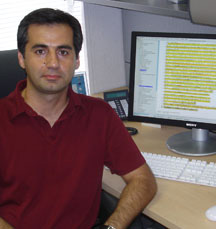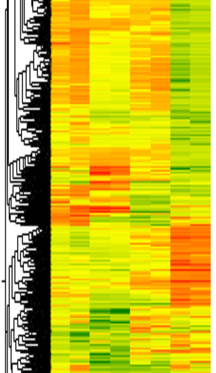

Snapshot:
Mohammad Fallahi
Position: Scientific Software Engineer, Informatics Department, Scripps Florida
Goal: "To apply and develop state of the art mathematical modeling and software to very large and complex biological data"
Projects: Working with the Scripps Florida Bioinformatics group, led by Nick Tsinoremas, to implement software for data management, data modeling and data analysis. Working with principal investigators on special projects, for example the visualization and data management of the C1 fungus genome or the reconstruction of the gene regulatory network in T-cell development, using microarray data.
Started at Scripps Research: April 2005.
Background: Bachelor's degree in Electrical Engineering and master's degree in Electrical & Computer Engineering from Isfahan University of Technology, Iran. Work for software development company LogicTree; Sloan-Kettering Cancer Center; and the University of Miami in the group of Howard Petrie, now a professor at Scripps Florida.
Biggest Challenge: "Integrating life science informatics and computer science—a relatively new endeavor that offers terrific possibilities for many areas of biology."
Favorite Part of the Job: "Helping scientists interpret their large and complex biological data using advanced methods. I also enjoy working in a department where the director encourages us to try our ideas."
Thoughts on Working at Scripps Florida: "Because it is a young institute, there are many opportunities to make a significant contribution to the advancement of institute goals. I also appreciate the feeling of community and all the help we received during the hurricanes."
Extracurriculars: Spending time with his wife, Sahba Tabrizifard (a research associate in the Petrie lab), boating on the Florida coastline, playing tennis, and going to the movies—especially those starring Al Pacino.
Send comments to: mikaono[at]scripps.edu

Scientific Software Engineer Mohammad Fallahi enjoys helping scientists interpret their large and complex biological data using advanced methods.

Reconstruction of the gene regulatory network in T-cell development.
